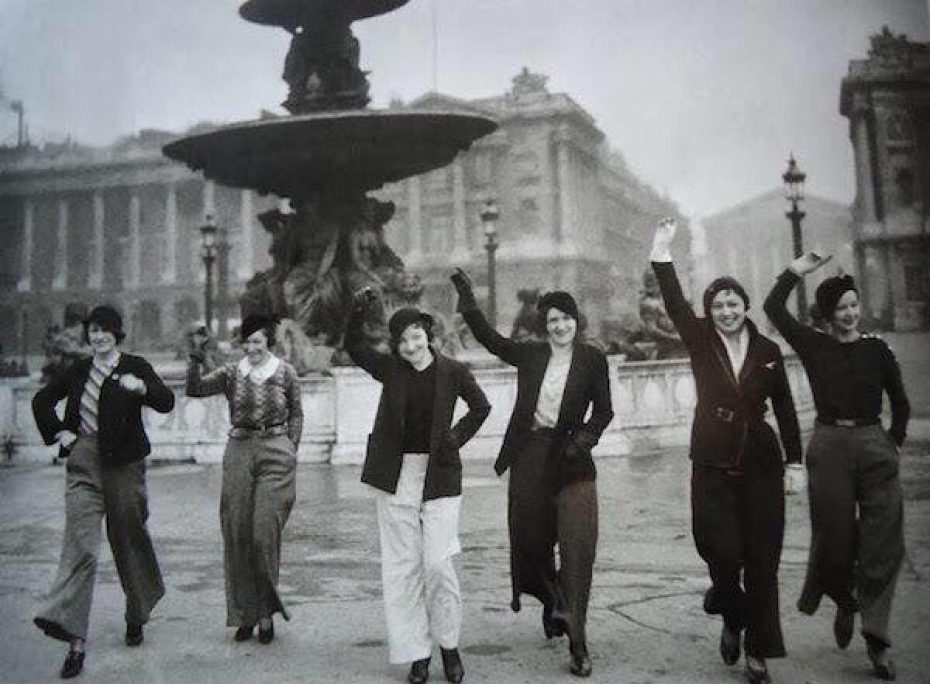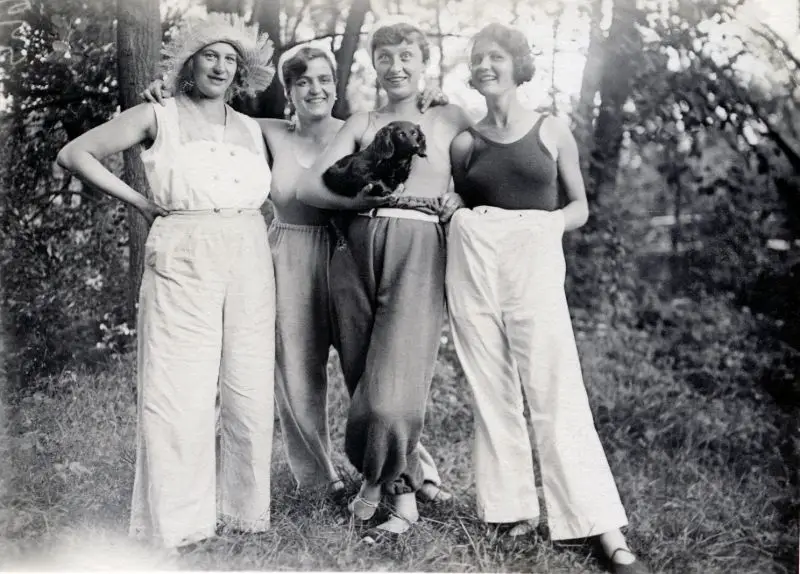 or centuries, societal norms and cultural expectations have influenced the way people dress. One such example is the prohibition that prevented women from wearing pants for a staggering 200 years. This fascinating piece of history sheds light on the long-standing struggle for female clothing freedom. In this article, we delve into the origins of this restrictive law, explore the societal implications it had on women’s rights and fashion, and examine the pivotal moments that led to its eventual overturn.
or centuries, societal norms and cultural expectations have influenced the way people dress. One such example is the prohibition that prevented women from wearing pants for a staggering 200 years. This fascinating piece of history sheds light on the long-standing struggle for female clothing freedom. In this article, we delve into the origins of this restrictive law, explore the societal implications it had on women’s rights and fashion, and examine the pivotal moments that led to its eventual overturn.
The Origins of the Anti-Pants Law
The roots of the law that banned women from wearing pants can be traced back to historical and cultural factors that shaped societal views on gender roles and fashion.

Throughout history, traditional gender norms dictated that women should adhere to specific roles and appearances. In many societies, women were expected to wear dresses or skirts, symbolizing femininity and modesty, while men exclusively wore pants, signifying authority and practicality. These norms were deeply ingrained and reinforced by cultural, religious, and societal influences.
In the 19th century, several Western countries, particularly France, introduced laws that explicitly prohibited women from wearing pants. These laws aimed to enforce gendered dress codes, maintaining the distinction between male and female attire. Violating these regulations could lead to fines, arrests, or even social ostracization for women daring to challenge societal norms.
The anti-pants law was also rooted in broader social constructs, such as the belief that women’s bodies needed to be covered and concealed to preserve their virtue and protect societal morals. The enforcement of gendered clothing standards reinforced the notion that women’s appearance should prioritize aesthetics and conform to the ideals of femininity, rather than prioritizing comfort or practicality.
The Impact on Women’s Rights and Fashion
The ban on women wearing pants had significant implications for both women’s rights and the evolution of fashion.
The anti-pants law represented a form of gender-based oppression, restricting women’s freedom to choose their clothing and express their personal style. It perpetuated the notion that women should conform to prescribed gender roles and stifled their autonomy and self-expression.

Over time, the prohibition against women wearing pants became a symbol of the broader struggle for women’s rights and gender equality. The act of donning pants became a powerful statement challenging societal norms and demanding equal treatment and opportunities for women. The fight for clothing freedom mirrored the larger battles for suffrage, education, and employment rights.

Despite the constraints imposed by the anti-pants law, women gradually pushed the boundaries of fashion. Designers and activists emerged who championed the cause of gender-neutral clothing, advocating for more practical and comfortable attire for women. The gradual acceptance of women wearing pants in certain social contexts laid the groundwork for the subsequent fashion revolution that transformed women’s wardrobes.
Breaking the Barriers: Turning Points and the Overturn of the Law
The eventual overturn of the anti-pants law was the result of significant cultural shifts and key moments in history that challenged traditional gender norms.
The women’s suffrage movement of the late 19th and early 20th centuries played a crucial role in dismantling societal barriers. The fight for voting rights went hand in hand with challenging gender stereotypes, including clothing restrictions. Women activists, in their pursuit of equality, boldly defied the anti-pants law, sparking discussions around women’s rights and paving the way for future progress.

The outbreak of World War I and World War II introduced new societal demands and roles for women. With men away at war, women stepped into various traditionally male-dominated fields, such as factory work and military service. These unprecedented circumstances required more practical and functional clothing options, prompting a shift towards women wearing pants for work and daily activities.
The influence of cultural shifts and influential fashion icons also played a significant role in breaking down the barriers of the anti-pants law. Pioneering women, such as actresses and fashion designers, challenged conventions by wearing pantsuits and embracing androgynous fashion. These trailblazers inspired societal acceptance and reshaped the fashion landscape for women.
The 200-year ban on women wearing pants stands as a testament to the deep-rooted gender norms and societal expectations that have long shaped women’s lives. The fight for clothing freedom symbolizes a larger struggle for gender equality, personal autonomy, and self-expression. Over time, as societal attitudes evolved, women’s clothing choices became a powerful catalyst for change, challenging oppressive laws and reshaping the fashion landscape. The legacy of this historical battle reminds us of the ongoing pursuit of equal rights and the power of individual choices in shaping social progress.
Avid Writer with invaluable knowledge of Humanity!
Upcoming historian with over 30 million views online.
“You make your own life.”





